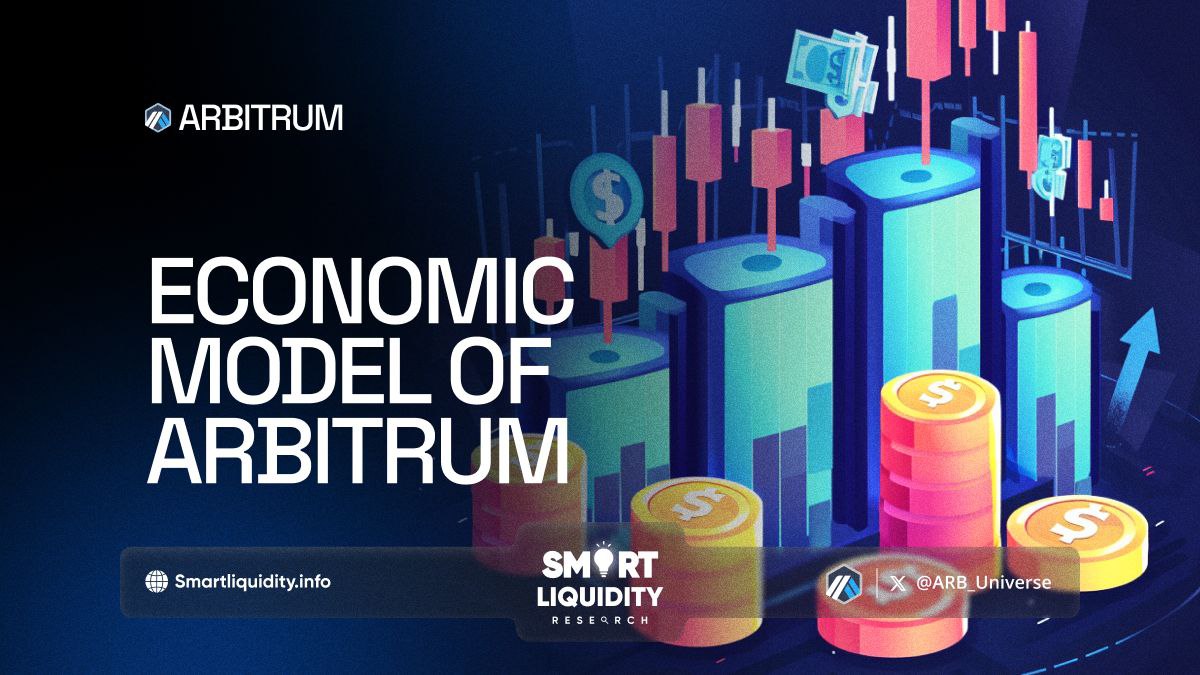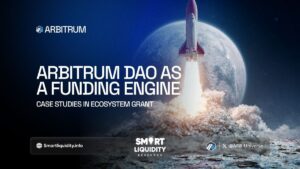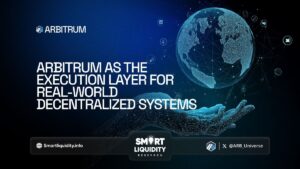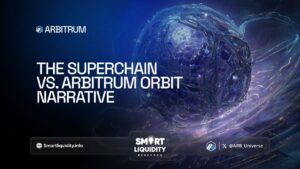Economic Model of Arbitrum: A Comprehensive Overview


Economic Model of Arbitrum: A Comprehensive Overview! In the rapidly evolving landscape of blockchain technology, Arbitrum has emerged as a significant player. As a Layer 2 scaling solution for Ethereum, Arbitrum aims to enhance the speed and reduce the cost of transactions while maintaining the security and decentralization of the Ethereum network.
This article delves into the economic model of Arbitrum, exploring its key components and their implications for the future of decentralized finance (DeFi).
What is Arbitrum?
Arbitrum is a protocol that enables faster and cheaper transactions on the Ethereum blockchain by processing them off-chain while relying on Ethereum for security. Using Optimistic Rollups, Arbitrum aggregates multiple transactions into a single batch and then settles on the Ethereum mainnet. This approach significantly reduces gas fees and increases transaction throughput.
Key Components of Arbitrum’s Economic Model
1. Transaction Fees
One of the primary economic drivers of Arbitrum is its transaction fee model. Users benefit from significantly lower fees than the Ethereum mainnet, making it an attractive option for DeFi applications and everyday transactions. These lower fees are achieved through efficient off-chain processing and batch settlement.
2. Arbitrum Token (ARB)
Arbitrum’s native token, ARB, plays a crucial role in its economic model. ARB tokens are used for governance, staking, and paying for transaction fees on the network. By involving the community in governance decisions, Arbitrum ensures a decentralized and democratic approach to protocol upgrades and improvements.
3. Staking and Incentives
To secure the network and ensure the integrity of off-chain transactions, Arbitrum implements a staking mechanism. Validators and other participants are required to stake ARB tokens, which act as collateral. In return, they earn rewards through transaction fees and newly minted ARB tokens. This incentivizes honest behavior and network participation.
4. Economic Incentives for Developers
Arbitrum’s economic model also focuses on attracting developers to build on its platform. By offering lower transaction fees, faster transaction times, and compatibility with Ethereum’s existing infrastructure, Arbitrum provides an attractive environment for DeFi projects and dApps. Additionally, developers can earn rewards through various grant programs and ecosystem initiatives.
Addressing Challenges and Ensuring Sustainability
While Arbitrum’s economic model offers numerous advantages, it also faces challenges that need to be addressed to ensure long-term sustainability. These include:
- Security Concerns: Ensuring the security of off-chain transactions and preventing potential exploits is paramount. Arbitrum continuously works on enhancing its security measures and conducting audits to maintain network integrity.
- Scalability: As the network grows, maintaining scalability without compromising on speed and cost-effectiveness is crucial. Arbitrum is actively researching and implementing solutions to improve scalability.
- Community Governance: Ensuring active and fair participation in governance decisions is essential for the decentralized nature of Arbitrum. Efforts are made to engage the community and provide transparent governance mechanisms.
The Future of Arbitrum
The economic model of Arbitrum positions it as a formidable player in the blockchain space. By addressing the scalability and cost issues of Ethereum, Arbitrum paves the way for mass adoption of DeFi applications and blockchain technology. As the ecosystem continues to grow, the ongoing development and enhancement of Arbitrum’s economic model will be critical to its success.
In conclusion, Arbitrum’s innovative approach to scaling Ethereum and its robust economic model makes it a key player in the future of decentralized finance. With its focus on lower fees, staking incentives, and a developer-friendly environment, Arbitrum is set to drive the next wave of blockchain innovation.




